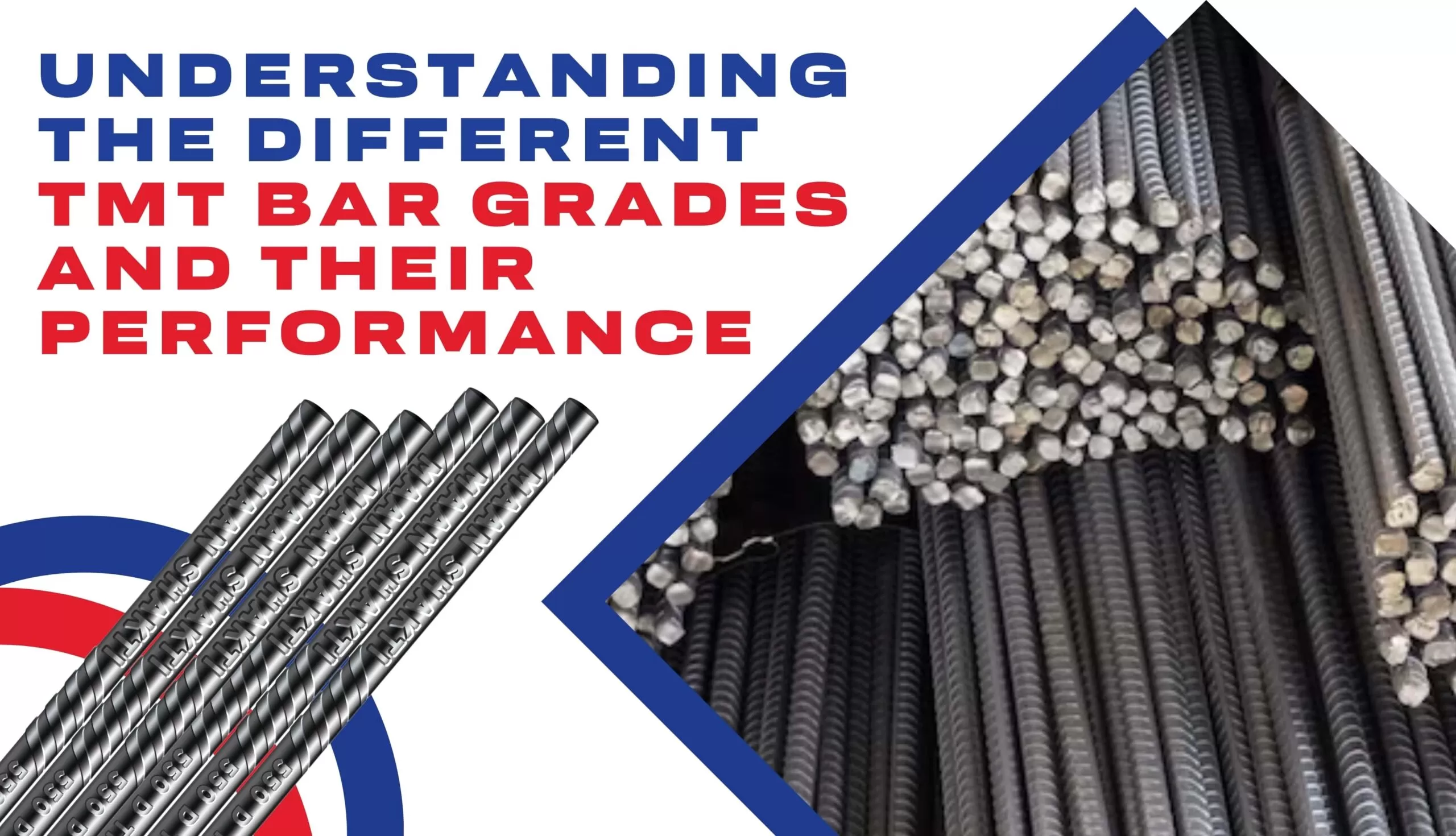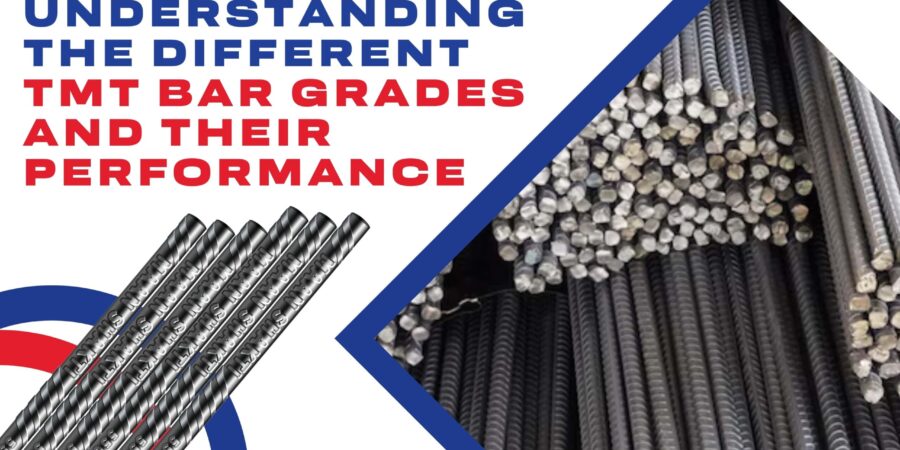TMT (Thermo-Mechanically Treated) bars are fundamental to construction and are also available in various grades that signify their strength and quality. Hence, many a time people get confused about which grade to choose for their project.
These grades play a pivotal role in determining a structure’s durability, resilience, and safety against external forces. The grading system, typically denoted as Fe415, Fe500, Fe550, and Fe600, among others, establishes the bar’s tensile strength, ductility, and flexibility. These crucial factors influence the performance of the best TMT bars under stress and load. Each grade signifies the yield strength in megapascals (MPa), reflecting the amount of stress the bar can withstand without permanent deformation.
Through this blog, we will help you in dissecting the significance of TMT bar grades. Here, we will explore their mechanical properties along with the impact of different grades on structural integrity.
Breakdown of TMT Bar Grades and Their Significance
TMT bars are classified into grades such as Fe415, Fe500, Fe550, and Fe600, each denoting their yield strength in megapascals (MPa). The numbers in these grades indicate the minimum yield strength of the bars. Below is a detailed explanation of some of them.
Fe415 Grade
Steel bars of this grade exhibit a minimum yield strength of 415 MPa, making it suitable for residential construction and small to medium-sized buildings. It offers moderate ductility, allowing some flexibility without compromising structural integrity.
Fe500 Grade
With a minimum yield strength of 500 MPa, Fe500 provides higher tensile strength compared to Fe415, making it versatile for various structures, including bridges and commercial buildings.
While maintaining strength, it also ensures a certain level of ductility, crucial in absorbing shocks and vibrations.
Fe550 Grade
Fe550 boasts a minimum yield strength of 550 MPa, providing superior strength suitable for heavy-load-bearing structures like high-rise buildings and industrial constructions.
Despite the increased strength, Fe550 maintains a balance between strength and ductility, ensuring toughness against stress.
Fe600 Grade
This is among the best TMT bars, with a minimum yield strength of 600 MPa, specifically designed for specialized construction projects and applications demanding maximum strength.
It retains considerable ductility and resilience, even at its heightened strength to allow adaptability in extreme construction conditions.
Choose the Best TMT Bars of Right Grade for Your Construction With Our Help
It is undeniable that the choice of TMT bar grades significantly influences construction performance. Hence, one should buy the best TMT bars suitable for their need. This also means considering the surrounding environment of construction.
Here, we help you find the right TMT bars for your construction by pointing out their suitability in different environments.
Durability in Harsh Environments
TMT bars with higher grades, such as Fe550 and Fe600, exhibit better corrosion resistance due to their composition and superior manufacturing processes. These grades are more suitable for constructions in coastal areas or environments with high humidity, as they offer increased protection against corrosion. Hence, they will ensure the long-term durability of the steel bars.
Flexibility and Adaptability
The ductility of TMT bars, especially in higher grades, allows them to bend without breaking. This enables architects and engineers to design complex structures without compromising on structural integrity or safety.
Behavior in Seismic Zones
TMT bars of higher grades, particularly Fe550 and Fe600, exhibit enhanced ductility and strength, crucial in seismic zones. They offer better resistance to the lateral forces experienced during earthquakes, reducing the risk of structural failure.
Residential Construction
Lower-grade TMT bars like Fe415 are commonly used in residential buildings where the structural loads are generally lower.
For smaller structures with lower height and fewer load-bearing requirements, Fe415 bars may suffice, offering a cost-effective solution without compromising safety.
Renovation and Repair Projects
The best TMT bars of lesser grade might be applicable in repair or renovation projects. This is because, here reinforcing existing structures doesn’t experience heavy loads.
Fe415 bars can be suitable for minor repairs or for structures, such as parapets, boundary walls, or non-structural partitions where the load-bearing requirements are minimal.
Economic Viability
While higher-grade TMT bars might have a higher initial cost, their enhanced strength and durability often result in reduced maintenance expenses and longer service life.
It is always advisable to go to the manufacturer of TMT bars for higher-grade material for long-term benefit.
Takeaway
Understanding the diverse spectrum of TMT bar grades is essential in making informed decisions for construction needs. And to help you choose the right steel bars we gave you insights on different grades and their suitability for distinct environments. Still, it is wise to consult with the manufacturer of TMT bars for high-grade materials to sustain construction integrity and enduring advantages.


